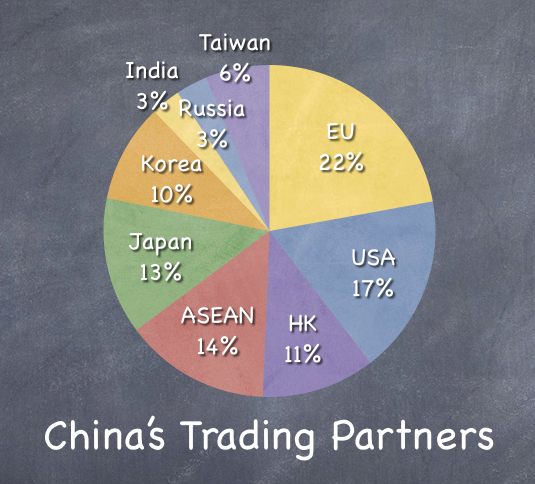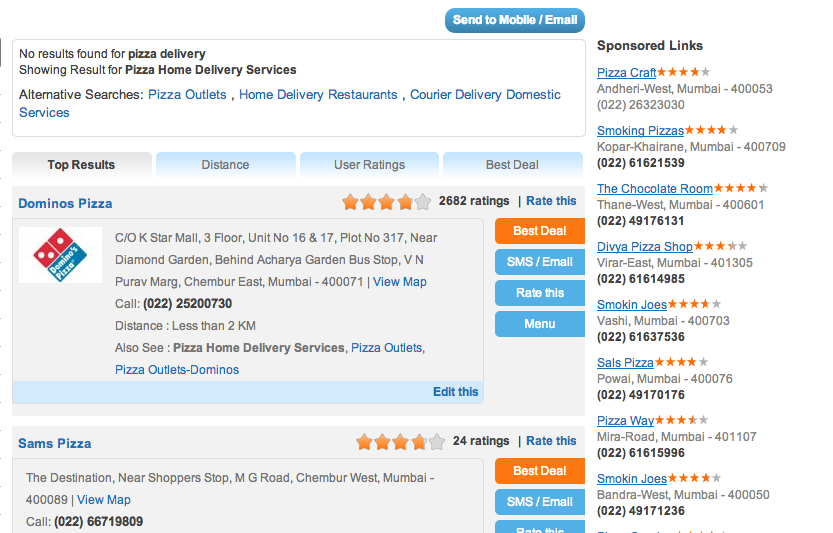This post is written by Shiv Kukreja, who is a Certified Financial Planner and runs a financial planning firm, Ojas Capital in Delhi/NCR. He can be reached at skukreja@investitude.co.in
Budget 2013 had “next to none†changes for the Indian taxpayers, investors or savers. As far as the investment options are concerned, some minor changes were made in the Rajiv Gandhi Equity Savings Scheme (RGESS) and a new kind of bonds got proposed to be introduced from June 2013.
Most of you must be aware about it by now, these are Inflation-indexed bonds (IIBs) or inflation-indexed national security certificates which will link their capital appreciation to inflation rates.
High inflation has left Indian investors earning negative real interest rates and that ways, it has reduced their purchasing power also. Investments by Indian households in financial instruments have also dipped to its record lows in the recent times. IIBs, by definition, are meant to provide protection against inflation to its investors.
The basic idea behind launching these bonds is to incentivise Indian household sector to invest in financial instruments rather than buy gold and thereby hedge the investors’ investments against high inflation and lower the gold demand here in India.
As per the Economic Survey of 2013: “Gold is considered as a hedge against inflation. Investors, especially in the middle-class, invest their savings in gold, which, in turn, has created a huge demand for the yellow metal. This necessitated imports, resulting in foreign exchange outgo, causing concerns for the RBI and the government. Like gold, the investment in IIBs would help hedge against inflation.â€
India is the largest importer of gold in the world as people have a charm of owning it as jewellery and they also have a view that the gold prices always increase over a period of time, even if there is a small fall in its prices in the short term.
India imports a large percentage of its gold consumption and makes payments in foreign currency for the same. A rise in gold demand and its imports results in a rise in demand for dollars which is a big negative factor for our economy as it results in a fall in the value of Indian rupee and a higher current account deficit (higher imports – lower exports). Ultimately, it results in even higher inflation.
IIBs are not new to the financial markets. The RBI had introduced inflation-indexed bonds some years ago, which, however, did not take off due to poor response. It was then decided to re-design the instrument.
RBI has been advocating the re-introduction of IIBs for quite some time now and it also brought forward a technical paper on IIBs in October 2010.
IIBs – Good for the Govt.
IIBs benefit both the investors as well as the issuers. Research suggests that during inflationary periods, the government’s weighted average cost of market borrowings through IIBs would be cheaper in comparison to nominal dated securities and thus it would be able to raise its required borrowings in a cost effective manner. It also suggests that the nominal interest payouts would be in line with the revenues of the government, leaving minimum mismatches on account of inflation.
Also, if the government succeeds in its attempt to attract a portion of investors’ money invested in gold or gold-linked instruments towards these IIBs, then it would reduce our import bill to some extent.
Structure of Inflation-Indexed Bonds
First tranche of Series I IIBs will be issued by the RBI on June 4, 2013 and it will carry a fixed real coupon rate which will be announced by the RBI in due course. The principal on the IIBs will be indexed to inflation and the coupon will be calculated on the indexed principal. So, the investors will receive inflation-adjusted interest payments periodically on the indexed value of their initial investment.
At the time of maturity also, the investors will get inflation-adjusted principal repayments or their original principal investments, whichever is higher.
Unlike many other countries where the CPI is widely used, the RBI has decided to use the final inflation numbers based on the wholesale price index (WPI) for setting the coupon rate on IIBs. As per the RBI – “Unavailability of a single CPI representing the consumption basket of all sections of society in India renders it impractical to be used in indexation of IIBsâ€. In the past also, WPI was used for indexing the capital indexed bonds (CIB) wherein principal was indexed at the time of redemption.
RBI has also announced that the final WPI inflation numbers with four months lag will be used as the reference WPI inflation. This is because many a times final WPI deviates widely from the provisional WPI, with even directional changes.
At present, the Office of the Economic Adviser, Ministry of Commerce and Industry, GoI releases the ‘provisional’ inflation numbers based on WPI with a lag of two weeks and ‘final’ inflation numbers based on WPI with a lag of two and a half months. For instance, provisional inflation numbers for May 2013 and final inflation numbers for March 2013 would get released on June 14, 2013. So, for indexation purposes in IIBs, final WPI inflation of May 2013 and June 2013 will be used as the reference WPI inflation for 1st October, 2013 and 1st November 2013, respectively.
How exactly it works
For example, assume an IIB issued at a face value of Rs. 1000 with a real coupon rate of 3% paid annually. If the annual inflation comes out to be 5% at the time of coupon payment, the principal of the bond would be re-calculated as Rs. 1050 and the coupon payment would be Rs. 31.50 i.e. Rs. 1050 * 3%.
Inflation-Indexed Bonds (IIBs):
Face Value: Rs. 1,000
Real Coupon Rate (or Inflation-Adjusted Coupon Rate): 3% per annum
Inflation at the time of Coupon payment: 2% or 5% or 8% (Three Scenarios)
Coupon Payment (in Rs.): [1,000*(1+2%)]*3% = Rs. 30.60 (or 3.06% on Rs. 1,000)
Coupon Payment (in Rs.): [1,000*(1+5%)]*3% = Rs. 31.50 (or 3.15% on Rs. 1,000)
Coupon Payment (in Rs.): [1,000*(1+8%)]*3% = Rs. 32.40 (or 3.24% on Rs. 1,000)
On the contrary, if there is a deflation of 2%, the indexed principal would be Rs. 980 and the coupon payment would be Rs. 29.40 i.e. Rs. 980 * 3%. However, at the time of maturity, as the principal to be received back can’t be less than the original face value of Rs. 1000, so it would either be the face value of the bond i.e. Rs. 1000 or a higher market price.
Index ratio (IR): Index Ratio will be used for indexation of the principal amount and will be computed by dividing reference index for the settlement date by reference index for issue date (i.e., IR set date = Ref. Inflation Index Set Date / Ref. Inflation Index Issue Date).
Tenors of the IIBs: First tranche of Series I will be issued for a tenor of 10 years, which is considered as the benchmark period in most of the dated securities. It is expected to have different maturities later on.
Issue Size: RBI plans to issue IIBs of Rs. 12000-15000 crore this financial year in various tranches and each tranche will be for Rs. 1000-2000 crore.
Reserved portion for Retail Investors: 20% of the issue size in the first tranche has been reserved for the retail investors. Series II of IIBs is expected to be announced in October, which will encourage exclusive participation from the retail investors.
At this juncture, it makes sense for the govt. to issue IIBs and it would help investors also in diversifying their asset portfolios. Moreover, investors will be able to participate in more productive assets rather than gold, which has cut down the financial savings dramatically. But, it remains to be seen how these bonds would evoke response from the investors this time around
Also read Deepak Shenoy’s post on Inflation Indexed Bonds as that has some good thoughts as well.



This is a good topic for a post, and I thought I would broaden the scope a little and answer why a company issues bonus shares and then my opinion on the implications of a bonus issue. I use ‘opinion’ because I’m not going to use any data to share what I think about bonus issues.
Why does a company issue bonus shares?
When a company issues a bonus shares the price of its existing shares come down by about the same ratio as the bonus shares that have been issued. So if the bonus issue is 1:1 which means they are issuing one additional share for each existing share, the market price of the share will roughly halve.
When the price falls, the liquidity of the share improves, and that to me is the primary reason for a company to issue bonus shares. I think an example shows this quite well. What if a single share of a company was Rs. 93,26,940 – how many people do you think will trade in this share?
What if the same share was worth Rs. 6,177? Wouldn’t a lot more people now trade in this share?
The two prices I took were the price of Berkshire Hathaway’s class A and class B shares. Warren Buffett’s Berkshire Hathaway never paid a dividend, issued a bonus, or conducted a split for decades and as a result their class A share is worth roughly $167,000.
I feel that the primary reason for all splits and bonus issues is allowing the share price to fall in value to facilitate trading.
What are the advantages of issuing bonus shares?
Facilitating trading is the one big benefit of issuing bonus shares, but this is from the perspective of the company, how do investors benefit from bonus issues?
People view bonus issues as a positive action, but I’m not sure why that is. As soon as the number of shares increase, the value of each share goes down in value, so theoretically there are no gains to be had just because of a bonus issue.
I came across a Business Today article about the features and advantages of bonus issues and according to the data they analyzed – there is a good chance that the companies that issued bonus shares rise in the year after the issue. You can read the whole article to see the data they looked at and then their interpretation of it. My own opinion on this is that this is one of those things where correlation does not always mean causation.
The companies they looked at rose, but what about other similar companies? How much did the companies that rose actually rose and for how long? They stopped after a year but what after that year?
I don’t know what the answer to these questions is but I’ve never come across anything that showed without doubt that bonus issues  are an indication that the company will outperform the market.